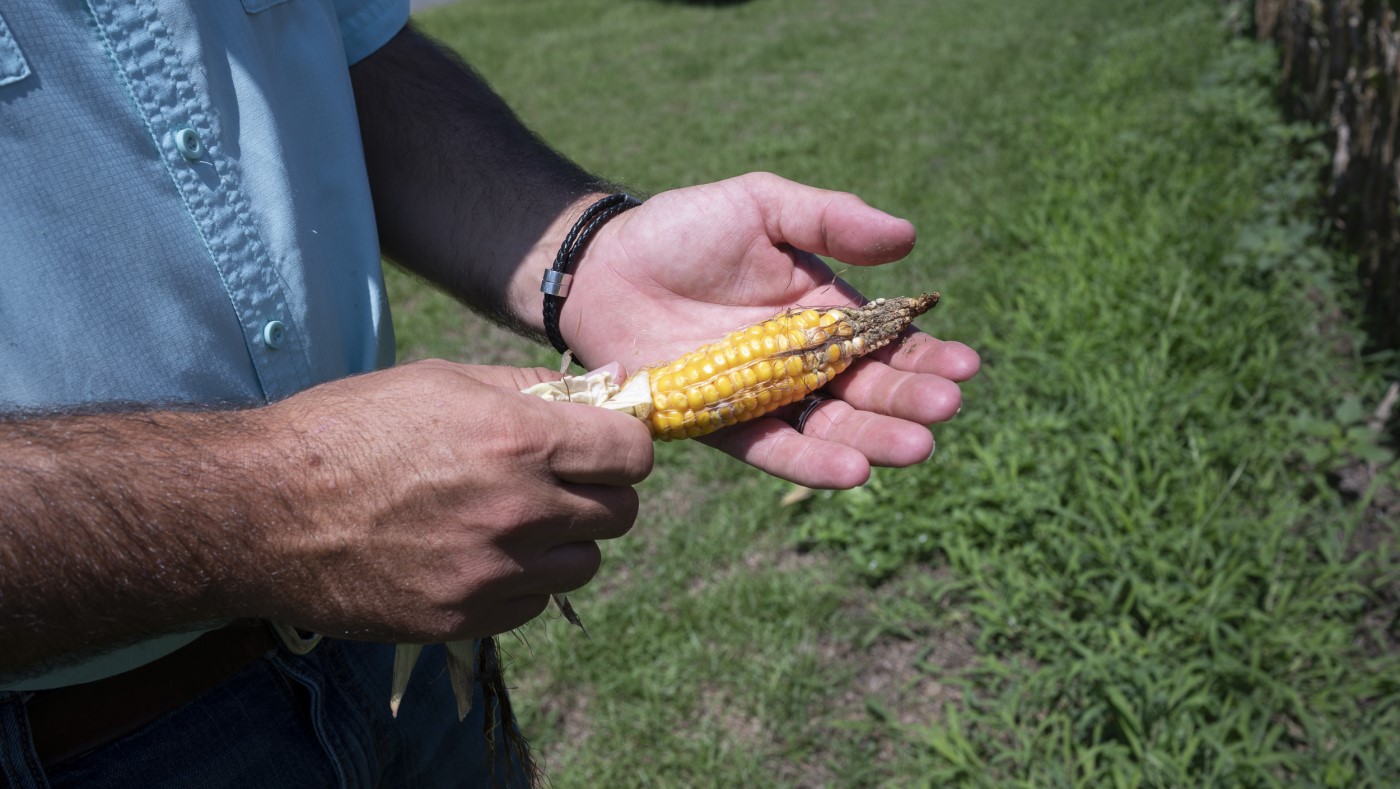by Jane Winik Sartwell, Carolina Public Press
August 2, 2024
North Carolina agriculture is bouncing back thanks to recent rain after a drought devastated crops earlier this summer, though one county — Yadkin County, in the northwest Piedmont — remains in a severe drought.
Drought conditions lifted just as suddenly as they started, with many counties, particularly in the eastern half of the state, receiving rainfall totals more than 10 inches higher than their July averages.
Parts of Richmond County, along the central South Carolina border, received 20 inches of rain in the last two weeks of July alone.
Thanks to the downpour, the county’s biggest crops — cotton and hay — both stand a chance after the brutal drought. The same is true for soybeans, tobacco, and sweet potatoes.
The county’s peach farmers say they have more fruit than they know what to do with.
“That was the most rain I can remember, except Hurricane Florence back in 2018,” Anthony Growe, field crops extension agent in Richmond County, told Carolina Public Press.
“But it kind of looked like a hurricane came through there. Trees started falling over because the ground was so wet, and roads were washed out.”

Growe, like many farmers in the area, had large areas of standing water in his fields. He could not take his equipment out into them to cut and bail the hay when the time came.
“Four to five weeks of growth for hay is ideal,” Growe said. “If you have to wait eight or nine weeks, like I did, and many farmers around here did, the nutritional value of the hay plummets quickly.”
Because Richmond is primarily a livestock county, the quality of hay is an important economic indicator.
But on Aug. 1, the hay fields in Richmond County were a vibrant green.
“That’s the beauty of Bermuda grass hay,” Growe said. “Driving through the county a month ago, every field would have been brown.
“For the grazing animals, if their food is torched up, farmers have to spend money on supplemental feed. You have to keep those animals fat, fed and happy.”
July’s deluge came after six full weeks of negligible rainfall in the county. The corn crop in Richmond County is beyond hope, an unfortunate truth across much of the state. Even the cotton, a very drought-resistant crop that thrives in hot temperatures, shows signs of drought stress.
In Pitt County to the northeast, estimates anticipate a $10 million loss in corn. Corn has a very tight window of pollination in June, and those weeks were bone dry. From June 8 to June 30, the rainfall total in Pitt County was exactly zero: a record 23 days without precipitation.
“We could not find a happy medium this season: either we got too much rain, or not enough,” Jonathan Smith, field crops extension agent in Pitt County, told CPP.
“I’ve always been told, ‘dry weather will scare you, but wet weather will ruin you.’ Standing water increases disease and insect pressure on the plant, as well as its direct impacts on plant health.”

Of the ears of corn that actually grew in North Carolina fields this summer, many fell victim to mold due to the wet weather of the last few weeks.
Greenville, Pitt County’s county seat, received more rainfall in the six days between July 22 and July 27 than the yearly average for the entire month of July. The total for this July was 15 inches, compared to the average of 5.86 inches.
Across the state in Yadkin, a severe drought persists, with a 3.09 inch rainfall deficit remaining in Yadkinville since June 1, despite recent rains.
“The eastern counties in the state were able to get that rain a week or two before we were, but last week we were finally able to get a lot of rainfall,” Ryan Coe, Yadkin County extension agent, told CPP.
“Reports were around 1 to 3 inches of rain. That’s the first significant rainfall since early June.
“It’s finally starting to turn things around. It’s good to see people mowing their lawns again. The corn crop is definitely hit the hardest, but this rain could turn the tobacco and soybean crop around to finish out the growing season.”
This article first appeared on Carolina Public Press and is republished here under a Creative Commons license.![]()


